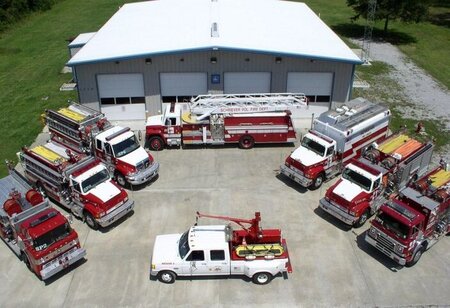
Observers surveying the expansive fire truck factory in Appleton, Wisconsin, operated by Oshkosh, might find it perplexing amid the current prolonged manufacturing downturn in the United States.
The backlog for Oshkosh's highly sought-after fire-fighting vehicles now extends into 2026, contributing to a staggering $16 billion backlog for the company's diverse truck range, encompassing waste haulers, cement mixers, tow trucks, and airport rescue vehicles. This stands in stark contrast to Oshkosh's total revenues for 2022, which amounted to approximately half of that backlog.
John Pfeifer, Oshkosh's CEO, remains optimistic about the company's outlook, asserting that despite potential downturn concerns, they don't foresee it. This scenario at Oshkosh underscores a notable disparity within the manufacturing sector.
On one side, certain companies are thriving due to a transformative shift in U.S. attitudes toward growing and safeguarding essential domestic industries. The Biden administration has supported legislation, including the Inflation Reduction Act, the CHIPS, and the Science Act, injecting billions into green technology, infrastructure, and semiconductor investments.
The relaxation of financial constraints by municipalities emerging from pandemic-induced austerity further fuels demand for emergency and other equipment.
Amid this, the Institute for Supply Management's monthly gauge of U.S. factory activity marked its 14th consecutive month of contraction, the longest since the early 2000s, typically indicative of a recession rather than a manufacturing revival.
While interest rates and inflation have subdued demand for non-essential consumer goods, certain sectors exhibit resilience. Industrial production data from the Federal Reserve indicates a strong performance in medium and heavy truck production, nearing the post-financial crisis high of 340,000 vehicles in 2019.
Chad Moutray, Chief Economist for the National Association of Manufacturers, notes that spending on core capital goods, a vital measure of business investment, remains close to record levels. However, the challenge for many producers stems from a post-COVID-19 pandemic downturn, where the initial surge in demand for various goods waned once the crisis abated.
Oshkosh stands out in this landscape, with Pfeifer attributing the enduring demand surge to U.S. companies repatriating factory work and substantial government spending in targeted industries, particularly infrastructure. Pfeifer emphasizes the ongoing and future infrastructure spending, with mega-projects such as semiconductor factories unfolding over several years.

